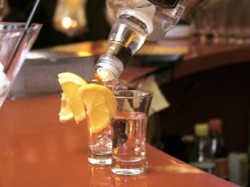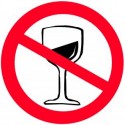Frightening rise in binge drinking among California teens
Debbie Allen felt sick when she heard about the death of 15-year-old Sarah Botill after a night of drinking Dec. 5 at a weekend sleepover in Gilroy.
Her daughter, Shelby Lyn, died under eerily similar circumstances Dec. 19 last year in Redding.
Like Sarah, Shelby Lyn Allen, 17, was drinking with two friends late at night. Both Sarah and Shelby Lyn became ill and started throwing up. Both girls were so ill by morning they had only faint pulses and were unconscious. Both died shortly after calls to 911 around 9 a.m.
“Young adults think vomiting is a normal thing,” Allen said. “They don’t see it as a big deal, an alarm. If they’re vomiting and fall unconscious, the only way to save them is to get medical attention.”
After dropping for decades, binge drinking among California teens is on the rise, and the consequences are more deadly than ever.

California teens participating in binge drinking is on the rise!
Hard liquor has replaced beer as the alcohol that teens reach for, and vodka is the drink of choice, several experts said. By consuming some of the many sweet drinks with vodka aimed at the youth market, or mixing vodka with cola or orange juice, young drinkers can consume large amounts without tasting the alcohol.
“People don’t realize how serious it is,” said Renee Zito, director of the California Department of Alcohol and Drug Programs. “It is increasingly a major problem in California.”
After her daughter’s death, Debbie Allen founded the Shelby Lyn Allen Alcohol Poisoning Education Foundation. She speaks around the country about the dangers of binge drinking, defined as consuming five or more drinks of alcohol within a two-hour period for men, or four or more in that time frame for women.
The need for more education is clear.
The number of California teens engaging in binge drinking has edged up since 2001, especially among middle and high school students.
Roughly 3 percent of seventh-graders in the 2001-02 school year reported having had at least one episode of binge drinking in the past 30 days. More than 6 percent had tried it in the past 30 days in the 2007-08 school year, according to the California Student Survey. For 11th-graders, about 26 percent had tried binge drinking at least once in the past 30 days in 2001-02; that increased to 29 percent for 11th-graders in the 2007-08 school year.
Deaths from alcohol poisoning or abuse also increased among young people age 13 to 20. There were 10 deaths in the state in 2003, 14 deaths in 2007.
“Alcohol poisoning isn’t so much a destination as a journey,” said Ralph Castro, who manages the substance abuse prevention program for Stanford University. “Meaning there are signs and symptoms that occur along the way. The end result is coma and death.”
Castro said the importance of getting students help in time when they get sick from drinking too much has prompted some colleges to start amnesty or “good Samaritan” policies where “if somebody calls for someone who needs medical attention, they won’t get into trouble.”
At Stanford, “we don’t have a written policy, but what we have is a kind of an unspoken contract with students,” he said. “I tell students they have the responsibility to look out for themselves but others as well. If someone needs help, students call for help.”
What sort of help depends on the severity of the case. If a person is unconscious, having trouble breathing or has repeated, uncontrolled vomiting, experts recommend an immediate call to 911.
Many teens aren’t willing to take the risk of binge drinking.
“I think it’s a stupid thing to do,” said 17-year-old Alex of Los Gatos, who asked that his last name not be used to avoid razzing from friends. “I know people who do, but I don’t think they fully understand the consequences of their actions.”
Nina Weis, 16, of San Jose said, “It wasn’t worth taking the risk” to binge drink.
“You do stupid things and you can’t think, and then bad things start happening,” she said.
It is unclear what caused the death of Sarah Botill in Gilroy. Police had said initially that “alcohol poisoning could have contributed to her death,” but the Mercury News reported Friday that a large amount of water was found in the teenager’s lungs, suggesting she might have drowned after drinking with her friends. One of her friends tried to sober her up in the shower the next morning. In an unconscious state, it is possible to drown in an inch or two of water, experts said.
Debbie Allen said she would give anything if the girls who drank that night with her daughter had called for help.
“Some kids are afraid they’ll get in trouble with their parents or the law, but if somebody is unconscious, if you shake them and you pinch them and you can’t wake them up, right then it’s time to call 911,” she said.
After Shelby Lyn became violently ill and semiconscious, she was propped up next to a toilet, and her friends went to bed. Shelby Lyn had consumed 10 to 15 shots of vodka in about two hours; one of the other girls had five or six shots and the other girl had eight shots, according to a report by the Shasta County District Attorney’s Office. One of them got up a couple of times in the night to check on her.
That girl, who was 17, was charged with involuntary manslaughter in connection with Shelby Lyn’s death, but the charges were later dropped.
“I will go anywhere to talk about this,” Allen said. “I’m throwing out Shelby’s seeds of education into the crowd. If I catch just one child with one of them, that’s saving one more life.”
source: San Jose Mercury News
